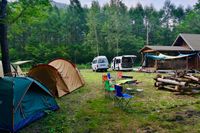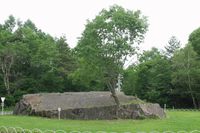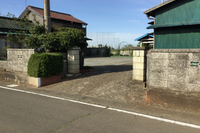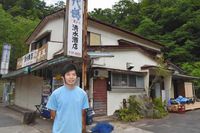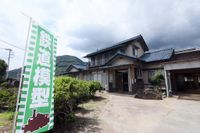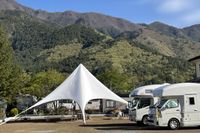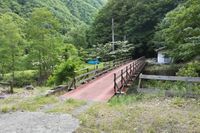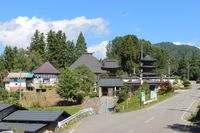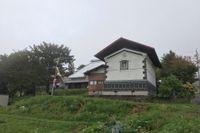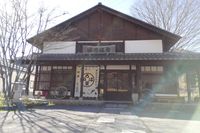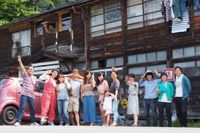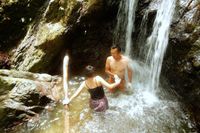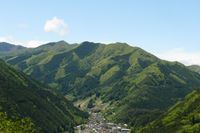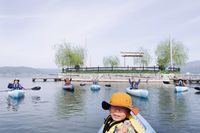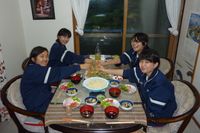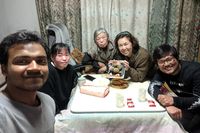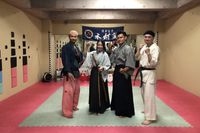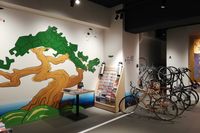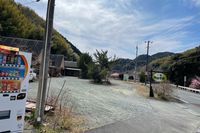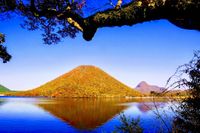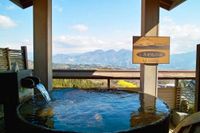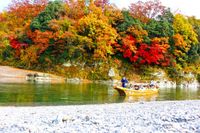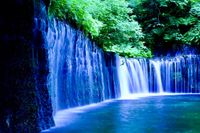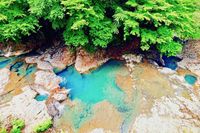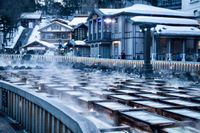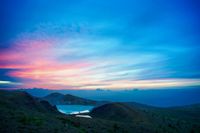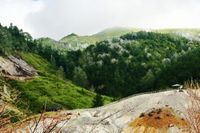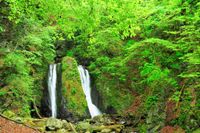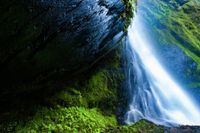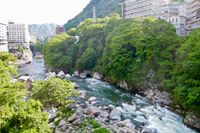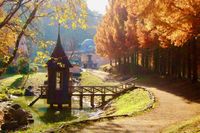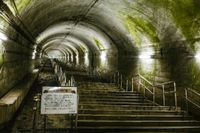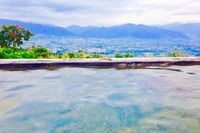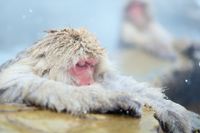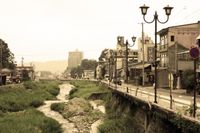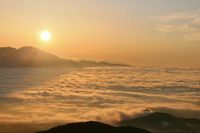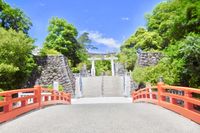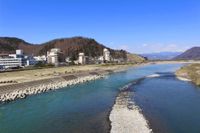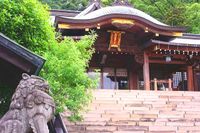Tomioka Silk Mill
群馬県/富岡市

Description
This is a silk factory that opened in 1872, and is registered as a World Heritage Site. When the country opened its borders during the Edo era(1603-1858), it was used as one of the places of production of silk which was exported to countries, supporting the Japanese economy. The place was opened with the efforts of Okuma Shigenobu, Ito Hirobumi and Shibusawa Eiichi, with operations ceasing 116 years later in 1987. The reeling yarns and storage areas used when in operation are still present and available to view by visitors.
Homepage
Address
Nearby Car Night Spots
A luxurious Niigami Pass camping car spot where you can occupy a 500 tsubo lot by yourself
¥150,000〜
/ per night群馬県 吾妻郡長野原町北軽井沢
5.0
(2)Railway Guest House Tetsunoya (hot spring available)
¥3,000〜
/ per nightYamanashi Shizume, Kasugai-cho, Fuefuki City
5.0
(15)Kawaguchiko Yatai Village
¥2,500〜
/ per nightYamanashi Kawaguchi, Fujikawaguchiko Town, Minamitsuru District
4.5
(58)Nearby Activities
【Only Foreign Visitors】Takoyaki Party with Locals
¥5,000〜
/ per personNagano Prefecture Wakaho Kawada, Nagano City
3.0
(0)【Only Foreign Visitors】Local Meetup in Nagano City
¥5,000〜
/ per personNagano Prefecture Hirabayashi, Nagano City
3.0
(0)【Only Foreign Visitors】International Exchange with Takoyaki and Okonomiyaki
¥5,000〜
/ per personNagano Prefecture Wakasato, Nagano City
3.0
(0)【Only Foreign Visitors】Original Miso Ramen Party
¥5,000〜
/ per personNagano Prefecture Minowa, Nagano City
3.0
(0)【Only Foriegn Visitors】 International exchange with handmade udon!
¥5,000〜
/ per personNagano Prefecture Shinonoi Utabi, Nagano City
3.0
(0)【Only foreigners】 Experience local life in Nagano
¥5,000〜
/ per personNagano Takehusa, Shinshu-shinmachi, Nagano city,
3.0
(0)Cycling in Shinjuku! From the tourist information center [INBOUND LEAGUE] which is in a good location and takes 20 minutes to Shinjuku Gyoen, Meiji Jingu and Yoyogi Park.
¥2,000〜
/ per personTokyo Shinjuku, Shijuku-ku
3.0
(0)Ranking Stations
Vanlife BASE | 45 min. from Narita Airport / Perfect for campervan travel/A seaside town rich in nature/Japanese countryside town/welcome traveler
¥7,000〜
/ per nightChiba Koseki, Kujukuri-machi, Sambu-gun
5.0
(62)Shin Meishin Suzuka PA (inbound) RV Station Suzuka * With Power!
¥2,200〜
/ per nightMie Yamamotocho, Suzuka-shi
4.3
(157)(Bonfire BBQ) Chita Mihama Noma Beach Station
¥3,500〜
/ per nightAichi Noma, Mihamacho, Chita County
4.7
(42)Nearby Drive Spots
Mount Shina
This is a mountain in Gunma prefecture which has been worshipped throughout the ages. With a height of 1,449m, the mountain also has the nickname of "Haruna Fuji". The area is particularly well known for the contrasting blue of the Lake Shina with the reds and oranges of the autumn leaves.
Ikaho Onsen
This is an old Onsen bath in Ikaho Town. It boasts 1,300 years of history and appeared in Manyoshu, a book collection of traditional Japanese poetry. The Onsen was used as a place of healing for a wounded soldier named Takeda Katsuyori, and eventually he commanded the area to be turned into an Onsen town. The area was also loved by many literary greats such as Natsume Soseki, Hagiwara Sakutaro and Noguchi Ujo. It is also famous as a place for hot spring buns and dumplings.※Credit:旅と温泉の無料写真素材 おんふぉと http://on-photo.com/
Nagatoro Gorge
This is a famous valley in the upper part of the 6km Arakawa river, in Chichibu. The area is famous for its rock formations and visitors can enjoy canoeing, rafting and campings. The area is famous for its fresh water shaved ice and miso pickled pork. In autumn, one can enjoy the autumn leaves as well as apple picking.
Shiraito Falls
This is a waterfall situated in Karuizawa. As water spouts up through the rocks, this waterfall looks attractive in all types of weather. The name derives from the fact that the water flowing down looks like white and silken threads.
Shima no Oketsu
Here, one can see the 8 large potholes within Shimagawa River. These potholes are formed where rocks and sand particles flow in circles in the same areas and gradually erode at the river bed. Over tens of thousands of years, it forms a natural wonder that can be viewed today.
Kusatsu Onsen
This is a famous onsen located at the foot of Kusatsu Shirane Volcano. It was named as one of the top Onsens in the country during the Edo period(1603-1868). The onsen is special for its large amount of natural water and is often used for research on "Yumomi", which is a process of inserting a hexagonal plate to reduce the feeling of heat when initially entering a warm bath.
Yugama Crater Lake
This is a crater lake in Kusatsu Mount Shirane, one of the most active volcanoes in Kanto. Due to the iron and sulphur that is melted in the water, the color is a turgid blue green, giving the impression of viewing a lake not of this world.
Manza Onsen
An Onsen located on Kusatsu Shirane Volcano at an altitude of 1,800m, the highest in Japan. There are several areas where hot water spouts up, almost like a geyser, creating an almost hellish looking landscape with a smell of sulphur. The area is also popular in winter for skiing.
Kosuge Odaki Falls
Follow a 15-minute river trail deep into a thicket of shioji trees until it reveals a majestic rock, where the rapid of Tama River breaks in half and forms an absolutely breathtaking twin waterfall display. Kosuge Odaki Falls truly is a sight to behold and a favorite of many photographers.
Mitsugama Falls
This area contains three impressive waterfalls in Okutama, with a height of around 12.5m. It is truly an area to get away from the hustle and bustle of the city, with just the wind, water and the chirping of the birds. There are larger waterfalls in the upstream area, and the area is ideal of hiking.
Minakami Onsen
This is an Onsen in Minakami town. It is situated at the upper part of Tone River, where it is surrounded by the Suwa Gorge and autumnal leaves. The area is popular for the horse drawn carts that run around this area. The area is also known for being a great spot for ski, rafting and other outdoor sports.
Tove Jansson Akebono Children's Forest Park
This is a park that is a recreation of Moomin's world (a famous cartoon originating from Finland), in Hanno, Saitama. Within the park, there is a "Moomin Mansion" where there is an exhibition dedicated to the author, Tove Jansson, as well as historical items relating to Moomin itself.
Doai Station
This is an underground station in Gunma, on the JR Joetsu line. The station is 81 meters below ground, and passengers have to climb a passage of around 338 meters or 462 steps, followed by a further 143 meter passage, and finally 24 further steps, leading it to becoming known as one of Japan's "most deep underground stations".
Hottarakashi Onsen
This is an Onsen in Yamanashi prefecture. From the bathing area, you can see the Kofu basin below, and Mount Fuji is visible on a clear day. The onsen became well known as a place that opened early in the morning and ideal for viewing the sunrise. The name comes from the fact that there are no special advertisements or services provided, but is a place simply to have fun.
Jigokudani Yaen Koen
This is a monkey park in the "Hell valley" hot spring area. The park was opened in 1964 to conserve the monkeys that inhabited the area due to them being close to extinction. There are now around 150 monkeys that inhabit the area. The monkeys that appear in the onsen area in winter are known as "Snow monkeys" and is one of the most famous onsen destinations in the world.
Shibu Onsen
This is an old Onsen along the Yokoyu River. It boasts a 1300 year history, and was a secret bathing spot for Takeda Shingen during the Sengoku era(1467-1600). It was also a place of healing for soldiers during the battle of Kawanakajima. For guests staying at the Shibu Onsen, a key is provided to the outdoor spring baths where are 9 baths said to wash away pain and struggle. (The Japanese number 9 is "ku" which is the same sound as the first character of "pain/struggle" - "kurou")
Utsukushigahara Highlands
This is a plateau situated in central Nagano, with an altitude of 2,000 meters. Beyond the Venus line highway renowned for its views, this hidden area awaits. Here visitors can see a 360 degree panoramic view of the northern and southern alps, Sengen mountain, and Mount Fuji. The area is an ideal photo spot for its otherworldly starscapes above and cloud scapes below.
Takeda Shrine
This is a shrine that was built by Takeda Shrine Association in 1919, where the warrior Takeda Shingen is deified as a shrine God. It is settled on the grounds of where the lodging house known as "Tutujigasaki Yakata", built by Takeda Nobutora. After the Russo-Japanese war in 1904, peopled wished for warriors and soldiers to be enshrined in the temple, which is why Takeda Shingen, a great warrior during the Sengoku era(1467-1600), was enshrined here, and is revered as the "Victorious God" even today.
Togurakami Yamada Onsen
This is an Onsen located on the river bed of Chikuma River. It opened during the Meiji era(1858-1912), and was known as a place of devotion towards the Zenkoji Temple, as well as a place of healing for wounded and sick soldiers during the war. A total of 150 geisha registered to this onsen, and also has the unique characteristic of being an onsen constructed on a base of a shooting range.
Suwa Taisha Shrine
This is a traditional shrine whose construction date is unknown. It houses two Gods known as Takeminakata no Kami and Yasakatome no Kami and 25,000 companies in Japan are associated with the shrine. It has been long known and revered as a war shrine, and where Sakanoue no Tamuramaro prayed for victory during the conquering of Ezo district. There are four halls which are separated by Lake Suwa, with the upper area of Honmiya and Maemiya on one side, and Akimiya and Harumiya on the other.

